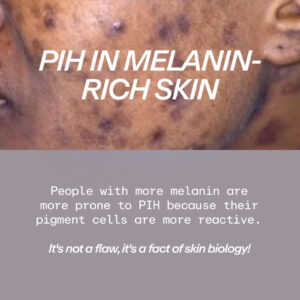Ever wondered why a pimple leaves a dark mark that just won’t quit? We’re diving deep into the science behind PIH. Watch our full explainer video or listen to the podcast to get the expert-level knowledge you need to tackle hyperpigmentation once and for all.
Prefer to Listen on the Go?
Skin 2000 Podcast
Learn More About Post Inflammatory Hyperpigmentation
Key Moments & Takeaways

What is PIH? Post-inflammatory hyperpigmentation (PIH) is the darkening of skin after inflammation or injury, such as a pimple or a scratch. It is not a permanent scar, but a temporary mark left behind by an overzealous healing process.
Why it’s more common in melanin-rich skin: PIH is particularly prevalent and can be more severe in individuals with darker skin tones. This is because their melanocytes (pigment-producing cells) are naturally larger and more reactive to inflammation, leading to an overproduction of melanin.
Types of PIH: The podcast distinguishes between two types:
Epidermal PIH: Appears as brown discoloration in the top layers of the skin. It tends to fade more easily over time with proper care.
Dermal PIH: Characterized by a blue-gray pigmentation that has leaked into the deeper skin layers. This type is more persistent and resistant to treatment
